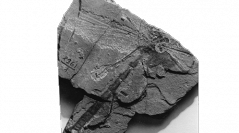

 Geodiversitas
26 (1) - Pages 33-60
Geodiversitas
26 (1) - Pages 33-60The Upper Jurassic-Lower Cretaceous dragonfly family Tarsophlebiidae is revised. The type species of the type genus Tarsophlebia Hagen, 1866, T. eximia (Hagen, 1862) from the Upper Jurassic Solnhofen Limestones, is redescribed, including important new information on its head, legs, wings, anal appendages and male secondary genital apparatus. The type specimen of Tarsophlebiopsis mayi Tillyard, 1923 is regarded as an aberrant or unusually preserved Tarsophlebia eximia. One new species of Tarsophlebia and three new species of Turanophlebia are described, i.e. Tarsophlebia minor n. sp., Turanophlebia anglicana n. sp., T. mongolica n. sp., and T. vitimensis n. sp. A new combination is proposed for Turanophlebia neckini (Martynov, 1927) n. comb. The phylogenetic relationships of the Mesozoic Tarsophlebiidae are discussed on the basis of new body and wing venation characters. The present analysis supports a rather derived position for the Tarsophlebiidae, as sister group of the the Epiproctophora rather than of (Zygoptera + Epiproctophora). Also, through the present discussion, the Oligo-Miocene family Sieblosiidae seems to be more closely related to the Epiproctophora than to the Zygoptera. But the present study and previous analyses suffer of the lack of informations concerning the more inclusive groups of Odonatoptera, viz. Protozygoptera, Triadophlebiomorpha, Protanisoptera, etc. The significance of the tarsophlebiid secondary male genital apparatus for the reconstruction of the evolution of odonate copulation is discussed.
Insecta, Odonatoptera, Zygoptera, Epiproctophora, Tarsophlebiidae, Sieblosiidae, Upper Jurassic-Lower Cretaceous, Cenozoic, fossil, copulation, phylogeny, revision, new species.